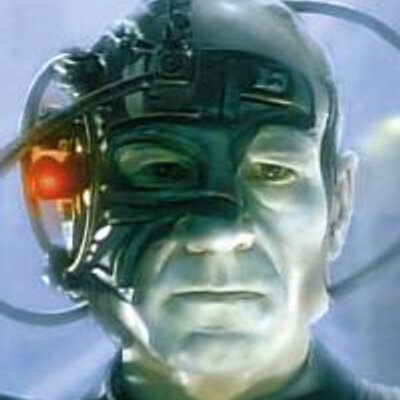
When Albert Einstein proved everything is relative, and time is not absolute but varies wildly depending on your speed, the level of space curvature and the lecturer’s tone of voice, everybody applied it to all sorts of stuff, such as keeping GPS satellites aligned, getting twins to age differently and keeping Madonna’s gold teeth a shiny yellow. I, in the meantime, worried whether traveling through Einstein’s space-time continuum would still allow us to maintain essential time conventions, such as Taco Tuesday.
My findings, after a series of experiments involving extremely fluctuating gravity, relativistic speeds and highly unstable margaritas, are less than comforting. It turns out space travel has some pretty heavy implications regarding keeping track of time. Here are some of the most important things you need to take into consideration, especially if you’re into writing space-travel science fiction:
Don’t plan anything over the week-end, because weekends are OVER.
Once you leave Earth’s 24-hour, 365 1/4 day rotation period, the calendar becomes pretty useless. Mars takes 687 days to go around our same star, which means you’d need to go through nearly all the months a second time, and then stop at the end of October and jump to January, which would imply a Christmas Halloweeen New Year celebration every two years. It would be horrible. Everyone would dress up as Jack Skeleton and nobody would have fun. Several new weekdays would also need to be invented to buffer out the twenty extra slots that would turn up each year. This means that you might plan to visit Mars for what you believe would be the week-end, and instead discover, as you disembark, that it’s still just Wednesdoubleday, and you’ve even missed tea-time.
- How to solve this:
Off-world colonies will necessarily have to create their own calendars, compliant with their individual orbital rhythms. This will mean we will have the interplanetary equivalent of time-zones. Although this may be a bit cumbersome, it will allow for more freedom, including the possibility of having a planet where it is always Saturday afternoon, just before the bars close.
Your date’s probably dead.
So, your main character is a senior officer on a starship. During a routine stop at a space station she meets Lieutenant Sexy Hot Lips and they hit off right away. She then leaves for another month or so of zipping around at warp speed for space exploration after promising her beloved to visit him as soon as she’s off-duty. Cool right?

Wrong! Because of the relativistic effects of travel through space at high velocity, your poor lieutenant will end up having to wait several decades for her to return. Time actually stops at light-speed, and even has the gall to go backwards if you exceed it. If you instantly jump away from Earth to a point that is a hundred light years away, you will be able to look back and see Earth as it was a hundred years ago. In addition, if you set off now for a system which is a hundred light years away, it will actually be a hundred years older when you drop out of warp. Which means you can forget about that dinner at half past seven you planned.
- How to solve this:
This is known as the twins paradox. Because of time dilation, the clock slows down on the moving starship, so if you don’t want all your galactic love stories to end with belated funerals, you should have Sexy Hot Lips get conveniently preserved in a cryo-stasis pod, turning him into Sexy Frosty Lips until he’s thawed or, as an alternative, you either make sure your sweethearts serve on the same vessel, or have them serve on separate ships which agree on flight plans that exactly match each other’s speed when flying away or towards each other. Of course, starbase restaurants will be used to people booking their table for dates a hundred years in the future.
Excuse me sir, what stardate is it?
Star Trek fans out there looked at the paragraph about not being able to maintain a calendar and were like, “pfft! Of course, that’s why we have stardate numbers, you mindless PetaQ!”

For your information, the stardate system in the Star Trek universe began as a progressive number which began with the original series in a more or less arbitrary way and was then reformed in the Next Generation series in 1987 with the five-digit system in which the first digit: 4, indicated the 24th century and the second one the, ahem, TV season. The idea of a simple progressive number which is clock-based and does not need to specify whether it’s day, night or a specific weekday, is definitely a step in the right direction. Day and night rhythms are simply duty shifts, so each crewmember would still have a healthy sleep cycle. The problem is that crews on each ship wold wind up with very different stardates after just a few days out, once again because of time dilation, making joint operations very difficult to organize. Imagine rallying up all Federation ships to counter a Borg attack. While the counterattack is scheduled at 44002.3, each ship would actually have their stardate counter off by hours, days or even longer. Ships would end up randomly turning up for a battle which was either lost long ago or not even due yet. Communications with the base would be futile since Hot Lips, now admiral, has been dead for many years.
In addition to that, time on the actual planets would still follow the local time frame and not the space-travel stardate system, resulting in jet-lag of epic proportions.
- How to solve this:
Starships should limit their missions to shorter periods, in order to reduce the accumulation of time-dilated intervals. In addition, travel routes should be dispersed with synchronized time-buoys. Upon arrival, the ship’s computer, which has automatically compensated and gradually updated its clock to match the destination timeframe, will be able to hook up with the nearest time signal to synchronize perfectly. Of course, individual planets would keep their own day/night rhythms, so in order to minimize the jet-lag, the spaceship would enter an orbit which matches the current light and darkness cycle of the ship. In other words, if on your spaceship it’s time for the morning shift, orbit the planet where the sunlight is just about to arrive, so you can beam down and have breakfast with the locals.

THANK YOU FOR READING!
Are you writing some space-scifi stuff? Let me know in the comments below. Have you signed up for my newsletter yet? You’re missing a ton of cool stuff!
Don’t forget to check out my other writing tips below:
Hits: 465
